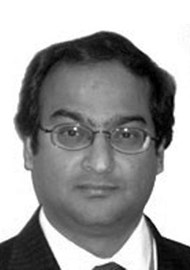The mandible provides support for the function of the lips, floor of mouth and tongue, and provision of oral competence and function such as swallowing, chewing and speech. Reconstruction of the mandible following ablation thus requires good bone stock to allow all the above including the placement of dental implants to promote dental rehabilitation. In the developed world vascularised bony flaps are the accepted gold standard, these may, however, not be widely available in other parts of the world. This is a prospective observational clinical study of 600 patients treated in a single unit over 10 years. Patients included in the study had mandibular resection for benign tumours with adequate soft-tissue cover and patients with malignant tumours with no radiation. All patients were primarily reconstructed with split rib bundle grafting technique. The oral cavity was meticulously prepared before grafting with removing all foci of possible infection and oral prophylaxis to optimise the mouth. During the surgery, maxillomandibular fixation was applied with arch bars to reconstruct the mandible in the appropriate 3D spatial planes. A reconstruction plate was adapted and fixed beyond the resection. The mandibular stumps were prepared to expose the spongosia and ensure watertight closure. Two alternating ribs were harvested split and applied rigidly. Age range was three to 63 years, of these 370 were male and 230 female. The commonest pathology was ameloblastoma (320) followed by odontogenic keratocyst (130). Defect length was 6-18cm with a mean of 8cm and hospital stay was three to 12 days. Follow up was six to 60 months. Two hundred and sixty patients (43.3%) showed excellent facial symmetry and posterior facial height and 300(50%) showed acceptable results. This is an excellent paper about another method to reconstruct the mandible. With microvascular techniques becoming more advanced and more accessible in the developed world, other older methods are forgotten. These techniques are in danger of being forgotten and lost. This paper, with a very adequate description of the surgical techniques and a good discussion of the art of mandibular reconstruction, is a must-read for any surgeon that operates in this area. It is also a larger cohort of patients with relatively long follow-up. While it is not going to be used in place of vascularised free flap grafting it is none the less a technique to be aware of and ideally understand.




